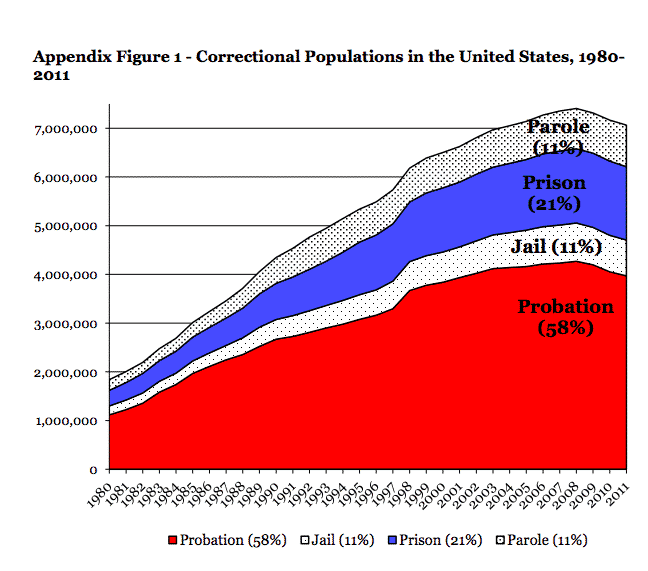Adam Tooze over at his website:
In the 1970s America embarked on a ghastly experiment in mass incarceration. This is part of a wider process of criminalization, driven by shifting race relations, the “War on drugs” and local law enforcement politics. It is anomalous in international comparison and its impact is clearly ruinous. Living in any American community you feel its impact all around you. But how big is it footprint? How can it be quantified?
One index is the scale of the prison and jail population at any moment in time. It soared from c. 400,000 the mid 1970s to 2.3 million in 2010. This is appalling but it understates the impact of criminalization because it does not count those who have been convicted of felonies and not incarcerated. Furthermore, it counts only those currently detained, rather than the entire population of people, mainly men, who have been processed by the system and bear its stigma for the rest of their lives.
Calculating the size of those wider populations requires one to consult a wider array of data not only on the prison and jail populations, but also those on parole and those convicted of felonies as a whole. It also requires us to move from the flow of people processed by the system in any given period to the stock of those who have been affected by it over a period of decades.

Source: http://users.soc.umn.edu/~uggen/former_felons_2016.pdf
To calculate the entire population touched by the system one has to make certain demographic assumptions about the rate at which ex-prisoners and felons die as well as their recidivism rates (to avoid those who have been convicted, imprisoned, released and then reconvicted and reincarcerated being counted many times over).
More here.
